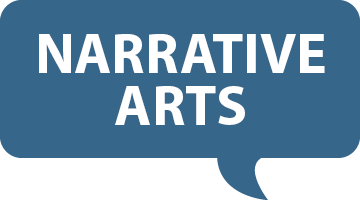Blog
Weekly roundup: after-disaster stories
 GETTING BEYOND “IF IT BLEEDS, IT LEADS”: Plenty of news stories — especially on TV — deal with disasters, fires, robberies, wars, shootings and the like. But how many of them cover what happens after disasters and acts of violence? What about the recovery that takes place afterwards, or the solutions people create to ameliorate social ills? Those can be the subject of “hard” news as much as the tragedies that preceded them. Read my most recent piece in the Chronicle of Philanthropy digital edition, about the “restorative narrative” genre championed by Images & Voices of Hope, and an outstanding new toolkit published by the Solutions Journalism Network.
GETTING BEYOND “IF IT BLEEDS, IT LEADS”: Plenty of news stories — especially on TV — deal with disasters, fires, robberies, wars, shootings and the like. But how many of them cover what happens after disasters and acts of violence? What about the recovery that takes place afterwards, or the solutions people create to ameliorate social ills? Those can be the subject of “hard” news as much as the tragedies that preceded them. Read my most recent piece in the Chronicle of Philanthropy digital edition, about the “restorative narrative” genre championed by Images & Voices of Hope, and an outstanding new toolkit published by the Solutions Journalism Network.
 MAKING IDEAS CATCH ON: How do you communicate in such a way that your ideas help create social change? Jonah Berger, the author of Contagious: Why Things Catch On, has a few ideas about that. He is interviewed in the Stanford Social Innovation Review by Sean Gibbons, the director of the Communications Network. Berger says, “There’s a science to way things catch on. Word of mouth is over 10 times as effective as traditional advertising. People trust it more, and it’s much more targeted.” Berger talks about six “drivers” to effective communications, which are “social currency, triggers, emotion, public practical value, and stories. Each of those is a time-tested principle that causes people to talk about and share information.”
MAKING IDEAS CATCH ON: How do you communicate in such a way that your ideas help create social change? Jonah Berger, the author of Contagious: Why Things Catch On, has a few ideas about that. He is interviewed in the Stanford Social Innovation Review by Sean Gibbons, the director of the Communications Network. Berger says, “There’s a science to way things catch on. Word of mouth is over 10 times as effective as traditional advertising. People trust it more, and it’s much more targeted.” Berger talks about six “drivers” to effective communications, which are “social currency, triggers, emotion, public practical value, and stories. Each of those is a time-tested principle that causes people to talk about and share information.”
LANGUAGE TO USE IN TALKING ABOUT SOCIAL ISSUES: Just caught on to the work of Anat Shenk Osorio of aso communications — check out her regularly updated “findings from the field.” She teamed up with the Center for Community Change to write a research brief on messaging around economic justice. It contains some surprising yet sensible dos and don’ts: Don’t say “we,” but “you and I.” Don’t talk abstractly about “change,” but instead “name real things people want (time with family, a secure environment, a decent life).” I got to this via an Upworthy series sponsored by the Open Society Foundations that is “shaping new language around human rights through the power of storytelling.”
MORE STORIES ABOUT THE GUILTY AND VIOLENT: This piece by Steve Bogira in the Social Justice News Nexus says we need to expand the range of stories we write about prisoners. Social justice advocates’ “favorite subjects are innocent people who are wrongly convicted,” Bogira writes. “Stories about the wrongly convicted, and about the drug war, and about juvenile and mentally ill offenders, can lead to much-needed reforms of the criminal justice system. But stories about the truly guilty and violent can have a larger target: our nation’s structural inequality, and the wounds it inflicts every hour, every day, on African-Americans more than any other group, in segregated cities throughout the nation.”
